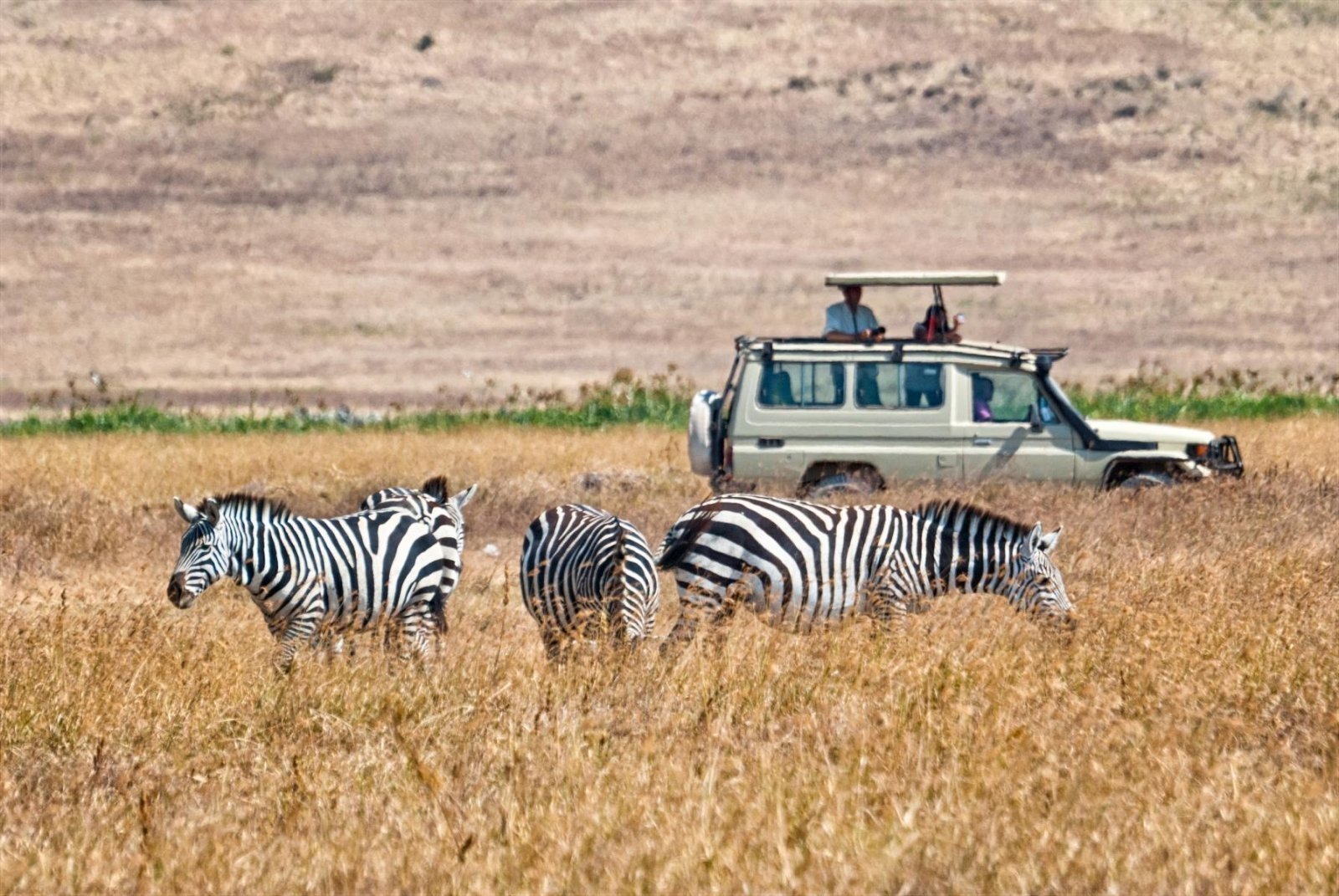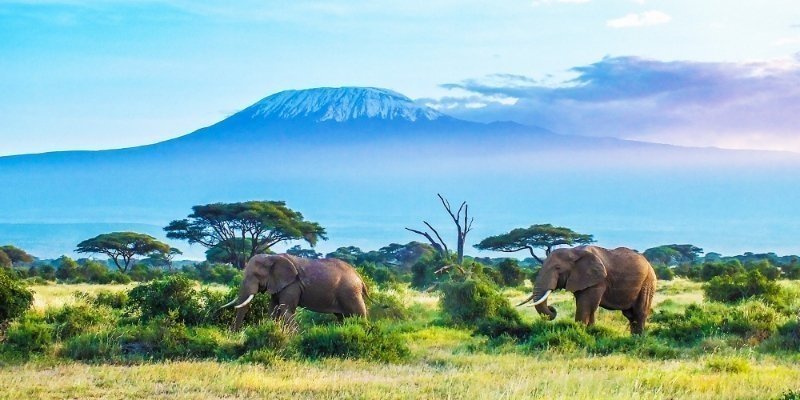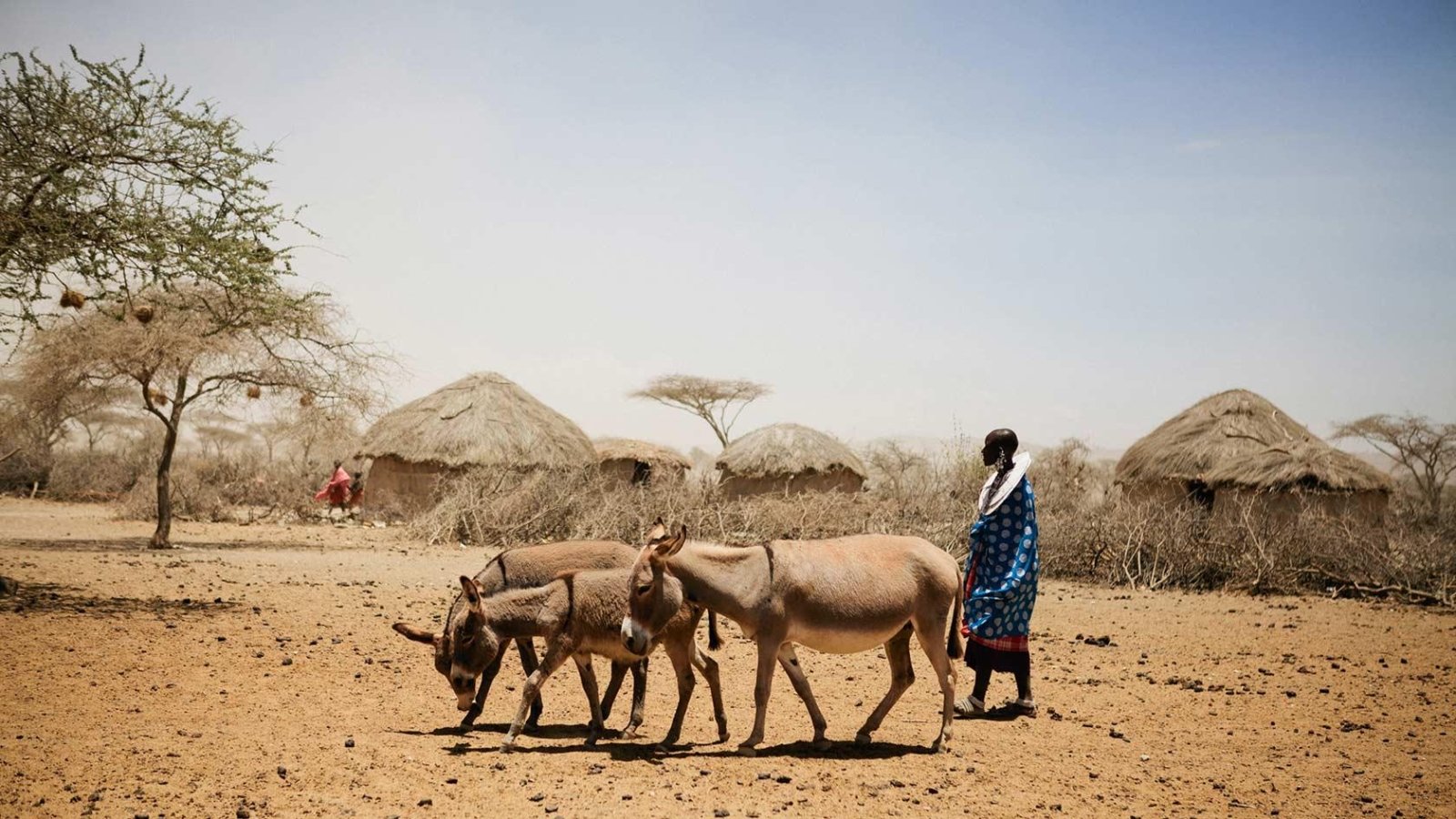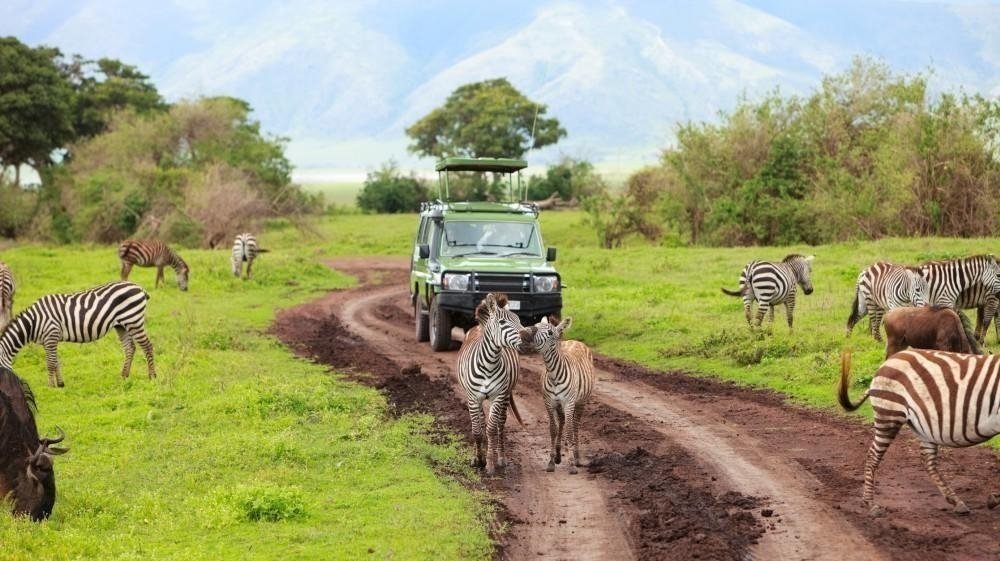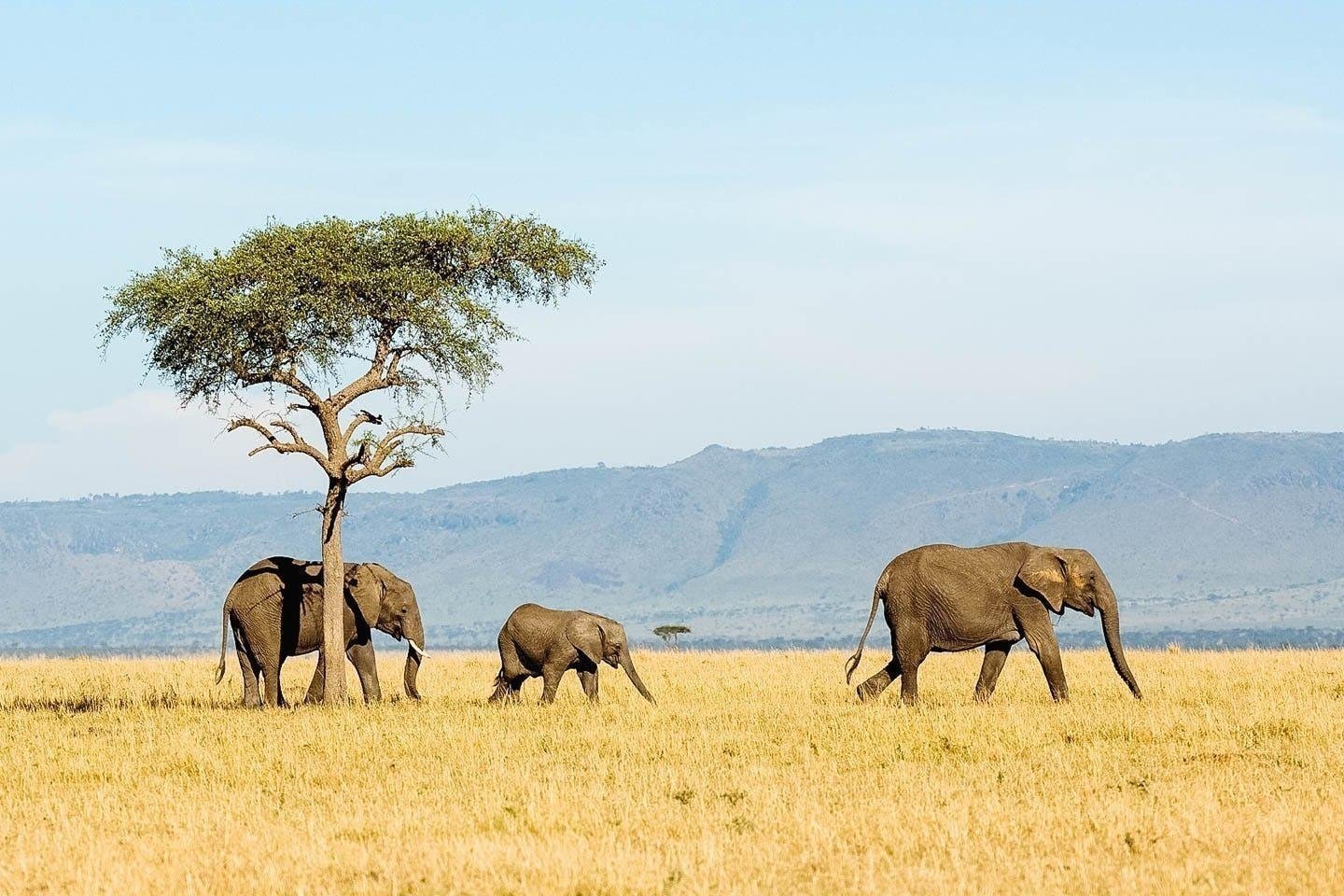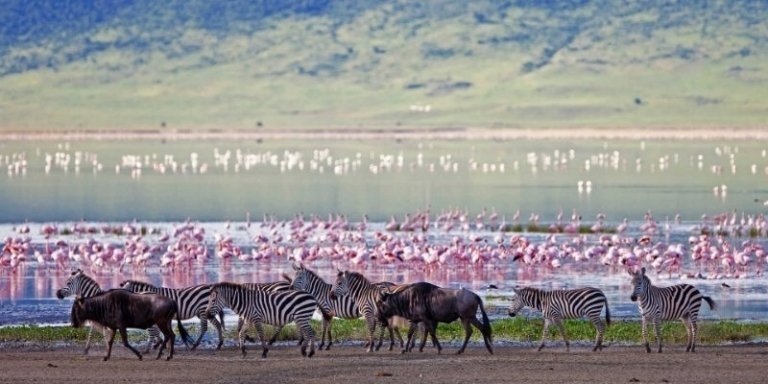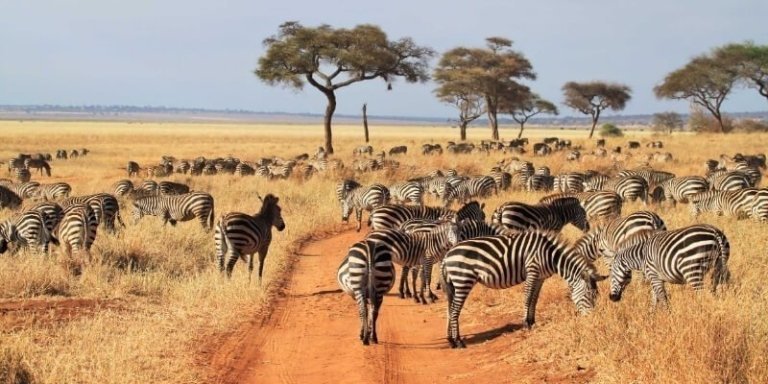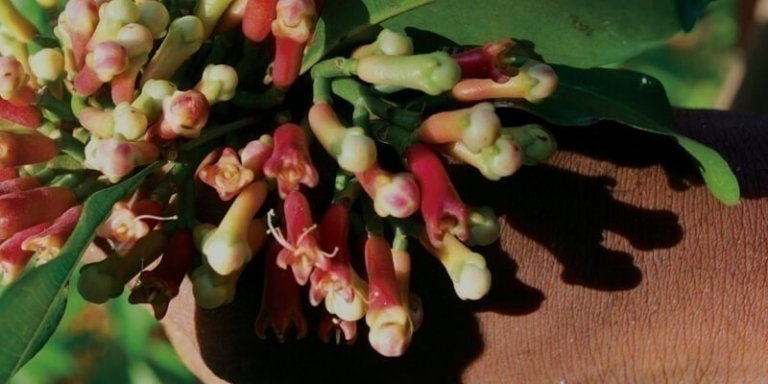The best of Tanzania Wildlife Safaris - 3-day Private Tour exclusively for you, your family or your exclusive group to find the most essential wild animals areas of Tanzania like Ngorongoro Crater, Read more ➤
Tanzania Private Safari - 5 days Adventure Trip
-
Duration - 5 days
-
Guide optionsEnglish, Spanish, German, French
-
Cancellation PolicyStandard
Overview
Tanzania Private Safari is the 5 days Adventure Trip exclusively for you, your family or your private group to discover the most important wildlife areas of Tanzania like Serengeti National Park, Ngorongoro Crater, Lake Manyara and Tarangire National Park. Private guide, jeep and camping!
Highlights
- Visit Serengeti National Park!
- Visit Ngorongoro Crater!
- Visit Tarangire National Park!
- Visit Lake Manyara National Park!
- Get 5 days of exclusive adventure on the Tanzania Private Safari only for you, your family or your private group!
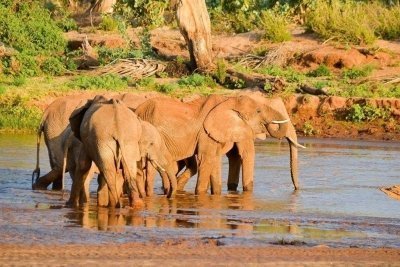
Description
Tanzania Private Safari - 5 days Adventure Trip
For the Tanzania Private Safari (5 days long private tour exclusively for you) we collect you directly from any hotel in Arusha or from the Kilimanjaro International Airport. We depart to the Serengeti National Park, Ngorongoro Crater, Lake Manyara and Tarangire National Park on an Exclusive Private Camping Safari. This Tour provides you the opportunity to experience Tanzania's leading wildlife parks on a private budget basis. Outdoor camping Equipment is offered. Public campsites have solar electricity, constructed toilets and restrooms (Hot/Cold showers). The itinerary is flexible because it is a private tour specifically for you. The private safari price per individual consists of all the taxes, incl. VAT.
Along the next 5 days of your Tanzania Private Safari you will have adventure private tour to discover the following popular sites and places of wildlife in Tanzania:
Serengeti National Park
The Serengeti is one of the most well-known parks in Africa and is synonymous with wildlife and classic African landscapes. It is Tanzania's oldest park and a Unesco World Heritage Site and is 'must see' of all Tanzania wildlife safaris, including our private Tanzania Safari. It is home to the incredible wildebeest migration and offers top-class wildlife seeing throughout the year. The Maasai individuals had been grazing their animals outdoors plains of eastern Mara Region, which they named "endless plains," for around 200 years when the first European explorer, Austrian Oscar Baumann, went to the area in 1892. The name "Serengeti" is an approximation of the word utilized by the Maasai to explain the area, stringent, which implies "the place where the land runs on permanently". The first American to get in the Serengeti, Stewart Edward White, tape-recorded his expeditions in the northern Serengeti in 1913. He returned to the Serengeti in the 1920s and camped in the area around Seronera for 3 months. Throughout this time, he and his buddies shot 50 lions.
The British colonial administration made a partial video game reserve of 800 acres in the location in 1921 and a complete one in 1929 because the searching of lions made them scarce. These actions were the basis for Serengeti National Park, which was established in 1951. The Serengeti gained more fame after the initial work of Bernhard Grzimek and his kid Michael in the 1950s. Together, they produced the book and movie Serengeti Shall Not Die, extensively acknowledged as one of the most crucial early pieces of nature conservation documentary. To protect wildlife, the British evicted the resident Maasai from the park in 1959 and moved them to the Ngorongoro Conservation Area. There is still considerable debate surrounding this relocation, with claims made of coercion and deceit on the part of the colonial authorities.
The park is Tanzania's earliest national park and stays the flagship of the nation's tourism industry, offering a major draw to the Northern Safari Circuit incorporating Lake Manyara National Park, Tarangire National Park, Arusha National Park, and the Ngorongoro Conservation Area. It has over 2,500 lions and more than 1 million wildebeest. The park is worldwide known for its abundance of wildlife and high biodiversity and along our Tanzania Private Safari we will try to discover as much as possible. The migratory and some resident wildebeest, which number over 2 million, make up the biggest population of big mammals that still stroll the world. They are participated in their journey through the Serengeti - Mara environment by 250,000 plains zebra, half a million Thomson's and Grant's gazelle, and tens of thousands of topi and Coke's hartebeest. Masai giraffe, waterbuck, warthog, hippo, and Impala are also plentiful.
Some hardly ever seen types of antelope are likewise present in Serengeti National Park, such as common eland, klipspringer, roan antelope, bushbuck, lower kudu, fringe-eared oryx, and dik-dik. Maybe the most popular animals amongst tourists are the Big Five, which include following huge animals.
- Lion: the Serengeti is believed to hold the largest population of lions in Africa due in part to the abundance of victim species. More than 3,000 lions live in this community.
- African leopard: these reclusive predators are commonly seen in the Seronera area but are present throughout the national park with the population at around 1,000.
- African bush elephant: the herds have actually recovered effectively from population lows in the 1980s triggered by poaching, numbering over 5,000 individuals, and are particularly variable in the northern area of the park.
- Eastern black rhinoceros: mainly found around the kopjes in the center of the park, very couple of people stay due to widespread poaching. There's presently a small but stable population of 31 individuals left in the park.
- African buffalo: the most many of the Big Five, with around 53,000 individuals inside the park.
Predators aside from the Big Five include the cheetah which is widely seen due to the abundance of gazelle, about 4000 identified hyena, two species of jackals, African golden wolf, honey badger, striped hyena, serval, 7 types of mongooses, 2 species of otters and the recently reintroduced East African wild pet dog (in your area extinct given that 1991). Apart from the safari staples, primates such as yellow and olive baboons and vervet monkey, patas monkey, black-and-white colobus are likewise seen in the gallery forests of the Grumeti River. Other mammals consist of the aardvark, aardwolf, bat-eared fox, ground pangolin, crested porcupine, three species of hyraxes and Cape hare.
Serengeti National Park has also great ornithological interest, boasting about 500 bird types, including Masai ostrich, secretary bird, kori bustards, helmeted guineafowls, southern ground hornbill, crowned cranes, marabou storks, yellow-billed stork, lesser flamingo, martial eagles, lovebirds, oxpeckers, and lots of species of vultures.
Reptiles in Serengeti National Park consist of Nile crocodile, leopard tortoise, serrated hinged terrapin, rainbow agama, Nile display, chameleons, African python, black mamba, black-necked spitting cobra, puff adder. Since 2005, the protected location is considered a Lion Conservation Unit together with Maasai Mara National Reserve and a lion fortress in East Africa.
Ngorongoro Crater
A visit to the Ngorongoro Crater is an experience of a lifetime. There are a couple of locations that have wildlife densities and variety on this level. It is not unusual to see the Big Five in one day and all this in the most incredible setting with a background of the 600m high crater wall. The Ngorongoro Conservation Area spans vast expanses of highland plains, savanna, savanna forests, and forests. Developed in 1959 as a multiple land use location, with wildlife coexisting with semi-nomadic Maasai pastoralists practicing standard livestock grazing, it includes the magnificent Ngorongoro Crater, the world's largest caldera. The property has worldwide significance for biodiversity conservation due to the presence of worldwide threatened types, the density of wildlife occupying the area, and the annual migration of wildebeest, zebra, gazelles and other animals into the northern plains. The substantial archaeological research study has also yielded a long series of proof of human advancement and human-environment characteristics, consisting of early hominid footprints going back 3.6 million years.
Tarangire National Park Tarangire is one of the more seasonal parks in northern Tanzania, with a lot of migratory movement within the higher Tarangire environment. In the Dry season, between June and October, big herds of animals are drawn into the Tarangire River. At this time, the elephant numbers are amazing and the park ought to belong to any safari in northern Tanzania. Often referred to as one of Tanzania's underrated national parks, Tarangire is among Africa's little-known gems and you will visit it with our Tanzania Private Safari. Boasting a range of wildlife as diverse as its landscape, Tarangire is likewise the park that can boast being house to Tanzania's largest population of African elephants.
With 4 of the Big Five also residing within the park, it is a fantastic spot for an outing from Arusha or as an addition to a Serengeti/Ngorongoro centered itinerary. Called for the Tarangire River which streams through it, the park is an exceptional option during the dry season when animals are forced to move more detailed and better to the river searching for water. Set against a background of marvelous baobab trees and twisted acacia, it produces a lovely experience. With the exception of the critically threatened black rhinoceros, Tarangire is home to all of Tanzania's most renowned animals - from the small dik-dik to the imposing African elephants and giraffes that bring in visitors from all around the world. In addition to these popular animals, the park is likewise house to 3 endangered animals that can be found nowhere else in the country: the fringe-eared oryx with its stylish horns, the towering greater kudu, and the tiny Ashy Starling. Tarangire's claim to fame is its big elephant population - the biggest in Tanzania.
Throughout the dry season, herds of approximately 300 elephants can be seen digging in the apparently dry riverbed of the Tarangire River searching for underground streams. Even throughout the wet season when other residents of the park have the ability to scatter out throughout the whole of the park's 20000 square kilometers, elephants remain a typical sight thanks to their great deals. In Between June and November of each year, Tarangire National Park plays host to a migration that, while not as impressive as the Serengeti's famous Wildebeest Migration, is nevertheless an impressive sight to see. As other sources of water dry up, the Tarangire River ends up being the park's sole source of water and draws big herds of wildebeest, gazelles, zebras, and hartebeests as well as the lions, leopards, and other predators who prey upon them. Tarangire provides interesting wildlife watching, as its dry landscape makes it simpler to spot these big groups of animals on the move.
Located in the eastern and southern regions of the park, Tarangire's overload network provides an important water catchment and sanctuary for the park's elephants, cape buffalo, and more than 500 types of bird. A seasonal swamp that dries up throughout the dry season, the Tarangire swampland uses intriguing game seeing chances for those wishing to see wallowing elephants, the Silale swamp lions, tree-climbing pythons, and even the rare African wild pet dog.
With its large range of habitats and food sources, Tarangire National Park is a popular location for birds and the individuals who like to see them. With more than 550 types of bird - the greatest number on all of Tanzania - Tarangire really is a birdwatcher's paradise and even on the Tanzania Private Safari we more concentrate on bigger animals, you will have chances to watch many bird species. The park's woodlands are home to hoopoes, hornbills, brown parrots, and the white-bellied disappear bird in addition to video game birds such as the helmeted guinea fowl, yellow-necked spurfowl, and the crested francolin.
Other popular occupants of the park consist of yellow-collared lovebirds, lilac breasted rollers, mousebirds, swifts, striped swallows, starlings, bee-eaters, hammerkops, plovers, Kori bustards, bateleur eagles, steppe eagles, and the enormous lappet-faced vulture. And that's simply naming a few! Along with the acacia, no plant is quite so synonymous with Africa than the noble baobab. Otherwise referred to as the Tree of Life, the baobab gets its unique shape from the truth it can store anywhere in between 300 and 1000 liters of water within its puffed up trunk. Able to live up to 600 years, these age-old trees are particularly typical in Tarangire National Park.
Legend has it that long back, the baobab trees would stroll across Africa on their roots until their movements outraged God. He planted them upside down so that they would be permanently bound to the one location. From a more practical perspective, the baobab is an important source of food for the animals of Tarangire, with its seeds being edible and its bark being utilized by elephants to hone their tusks. Within the park, the infamous 'poacher's hide' can be seen. This former hiding location for ivory poachers is stated to have concealed up to twenty hunters at a time throughout the unlawful trade's prime time.
Lake Manyara National Park will be also visited along our Tanzania Private Safari
Lake Manyara National Park is a small park at the base of the Rift Valley escarpment. Its groundwater forest uses a great change of landscapes from the more savannah-dominated parks. Lake Manyara has a huge number of elephants, many giraffes; zebras, wildebeest, warthog, impala, and waterbuck, small recognized shy Kik's dik-dik as well as Klipspringer along the ramps of the cliff. Leopards are hosted within the broken forests and cliff, healthy lions that are extensively known for their tree climbing pranks. This utilized to be a unique character of the park which is not the case today. Considered as Africa's largest, substantial herds of baboons are expected by many of the travelers.
On your Tanzania Private Safari, you can also arrange with your private safari guide visiting other interesting places around or concentrate on exact animals you wish to see in the wild.
What's included
- Inclusions:
- Park fees (for non-residents).
- All activities (unless labeled as optional).
- All accommodations (unless listed as upgrade).
- A professional driver-guide.
- All transportation (unless labeled as optional).
- All Taxes, incl. VAT.
- Exclusions:
- Flights (from/to Kilimanjaro International Airport).
- Tips (optional, if you are happy).
- Personal items (souvenirs, travel insurance, visa fees, etc).
Itinerary
- Visited Places:
DAY 1: Arusha - Tarangire National Park (120km - 2 hours). Pick-up from your hotel in Arusha at around 08:00 AM and drive on a tarmac roadway 120Km to Tarangire National Park with packed lunch for the game drives. The Park has natural vegetation primarily including Acacia woodland and giant Baobab trees, with huge swamp locations in the south. Herds of as much as 300 elephants scratch the dry river bed for underground streams throughout the dry season, while migratory wildebeest, zebra, buffalo, gazelle, impala, and eland crowd the diminishing lagoons. It the greatest concentration of wildlife outside the Serengeti environment a smorgasbord for predators, and the one place in Tanzania where dry-country antelope such as the majestic fringe-eared oryx are regularly observed. More ardent bird-lovers may watch open for shrieking flocks of the dazzlingly vibrant yellow collared lovebirds, and the rather drabber Rufus tailed weaver. Dinner and Overnight at Tarangire Campsite. Meals: Lunch, Dinner. DAY 2: Tarangire National Park - Lake Manyara National Park (70Km - 1 hour). Breakfast at 07:00 AM. Pick up from the Camp at 08:00 AM and drive with lunch box to Lake Manyara National Park (330 sq km or 127 sq mile's) on the base of the Great Rift Valley. This park is one of Tanzania's many dramatically situated African wildlife areas with a shallow however massive soda lake (covering two-thirds of the park). This small park includes five unique plant life zone. Thus supporting a big variety of birds and animals. Lake Manyara being popular for its big flocks of flamingos, provides the ideal introduction to Tanzania's birdlife. More than 400 species have been tape-recorded, and even a first-time visitor to Africa might fairly anticipate to observe 100 of these in one day. The park is also a home to tree climbing up Lions, Hippo, Elephant, Zebra, Buffalo, Giraffe, Baboon, Blue and Vervet monkey, Warthog and so far more. Dinner and Overnight at Panorama Safari Camp or Twiga Campsite. Meals: Breakfast, Lunch, Dinner. DAY 3: Campsite in Mto wa Mbu - Serengeti National Park (205km - 5 hours). Breakfast at 07:00 AM. Choose up from the Camp at 08:00 AM and drive to the Great Serengeti National Park with your Picnic Lunch Packed and game drives en route by means of Ngorongoro Crater rim. The Serengeti National Park is probably the most excellent wildlife sanctuary on the planet. Throughout the months December through March the seemingly endless plains of the southern Serengeti and the Conservation Area are inhabited by enormous herds of wildebeest and zebra. April and May in Western Corridor, June and July in Serengeti North. October and November in Lobo and Loliondo controlled Area. Yet even when the migration is quiet the Serengeti provides probably the most scintillating game drive in Africa. As the day cools and the sky is streaked by red, gold and orange shades, you might be surprised by the roar of a lion, a galloping giraffe, or the high pitched giggling of hyenas battling over a kill. Supper and Overnight at Serengeti Seronera Campsite. Meals: Breakfast, Lunch, Dinner. DAY 4: Serengeti National Park - Ngorongoro Crater Rim (145km - 3 hours). Early morning game drives in the Serengeti National Park. Breakfast at 09:00 AM. Thereafter drive with your Lunch Packed to Ngorongoro Crater Rim with afternoon Game drive en route. Be one of just a couple of lucky individuals to move in a Hot Air Balloon over the Serengeti Plains at extra expense. Floating quietly above the awakening bush, while spotting wildlife and delighting in the fantastic scenery of Africa, throughout rivers and over numerous small villages. On the method to the crater rim by option you can check out Olduvai which was the very first place where traces of an early stone tool culture were discovered, and offered the name to the Oldupai. In the sixties some of the earliest archaeological deposits of human development was discovered and a little museum documents these discoveries. You can choose to visit the shifting sands. Dinner and Overnight at Simba "A" camping area. Meals: Breakfast, Lunch, Dinner. Day 5: Ngorongoro Crater Floor - Arusha (190km - 3 hours). Breakfast at 06:00 AM. Thereafter come down into Ngorongoro Crater floor (19.2 km of diameter, 610m deep, 304 sq km) for a the game drive. The Ngorongoro Crater is among the most densely crowded African wildlife locations on the planet and is home to an approximated 30000 animals consisting of some of Tanzania's last remaining black rhinos. Supported by an all year supply of water and fodder, the Ngorongoro Crater supports a huge range of animals, which include herds of wildebeest, zebra, buffalo, eland, warthog, hippo, and huge African elephants. Another big draw card to this attractive crater is its substantial population of predators, which include lions, hyenas, jackals, cheetahs and the ever-elusive leopard. Ngorongoro Crater is frequently called 'Africa's Garden of Eden' the '5th Natural Wonder of Africa'. This breathtaking oasis supplies a haven for both predator and victim to live amongst meadows. After game drive and Picnic Lunch, drive back to Arusha for the drop off at your hotel or the airport. Meals: Breakfast, Lunch.
Frequently Asked Questions
How much time does the Tanzania Private Safari - 5 days Adventure Trip take?
Tanzania Private Safari - 5 days Adventure Trip duration is 5 days.
Book Tanzania Private Safari - 5 days Adventure Trip now just with Booking Deposit on TripsPointHow many days in advance I must book Tanzania Private Safari - 5 days Adventure Trip?
You can book Tanzania Private Safari - 5 days Adventure Trip at least in 2 days. Check availability calendar in "Book Now" form to see currently available dates.
Book Tanzania Private Safari - 5 days Adventure Trip now just with Booking Deposit on TripsPointtraveler reviews
You may also like
With the African Wildlife Safari in Northern Tanzania you are going on the private 4 days long tour across the Northern Tanzania to visit famous Serengeti National Park, Ngorongoro Crater and Read more ➤
Private Safari Tanzania is the 4 days long experience exclusively and privately for you or your family and we are going to explore richest wildlife areas of Tanzania - Serengeti National Park, Read more ➤
With the Tanzania Safari and Hiking - 4 Days Private Tour you will visit Tarangire Park, Serengeti Park and Ngorongoro crater. We include an exhilarating safari experience around the national game Read more ➤
The Spice Tour Zanzibar is one of the most popular excursions in Zanzibar. Zanzibar was one of the world’s leading producers of spices such as clove, nutmeg and cinnamon. Spice tour takes you to on o Read more ➤
